93 Best Children Books
A Wrinkle in Time
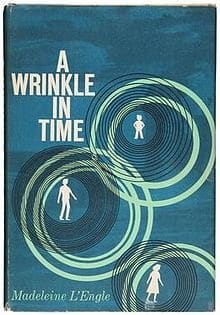
A Wrinkle in Time is a young adult novel written by American author Madeleine L’Engle. First published in 1962, the book has won the Newbery Medal, the Sequoyah Book Award, the Lewis Carroll Shelf Award, and was runner-up for the Hans Christian Andersen Award. The main characters—Meg Murry, Charles Wallace Murry, and Calvin O’Keefe—embark on a journey through space and time, from universe to universe, as they endeavor to save the Murrys’ father and the world. The novel offers a glimpse into the war between light and darkness, and good and evil, as the young characters mature into adolescents on their journey. The novel wrestles with questions of spirituality and purpose, as the characters are often thrown into conflicts of love, divinity, and goodness. It is the first book in L’Engle’s Time Quintet, which follows the Murrys and Calvin O’Keefe.
L’Engle modeled the Murry family on her own. Scholar Bernice E. Cullinan noted that L’Engle created characters who “share common joy with a mixed fantasy and science fiction setting.”
Read More About A Wrinkle in Time / Source
Aesop's Fables
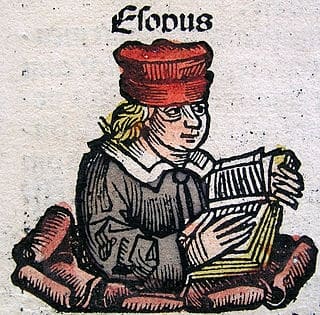
Aesop’s Fables, or the Aesopica, is a collection of fables credited to Aesop, a slave and storyteller believed to have lived in ancient Greece between 620 and 564 BCE. Of diverse origins, the stories associated with his name have descended to modern times through a number of sources and continue to be reinterpreted in different verbal registers and in popular as well as artistic media.
Read More About Aesop's Fables / Source
Are You There God? It's Me, Margaret.

Are You There God? It’s Me, Margaret. is a 1970 book by Judy Blume, typically categorized as a young adult novel, about a sixth-grade girl who has grown up without a religious affiliation, due to her parents’ interfaith marriage. The novel explores her quest for a single religion, while confronting typical issues faced by early adolescent girls going through puberty, such as buying her first bra, having her menarche, and feeling attracted to certain boys. The novel has been frequently challenged since the 1980s for its frank discussions of sexual and religious topics.
Read More About Are You There God? It's Me, Margaret. / Source
Artemis Fowl

The Fowl Adventures is a series of ten fantasy novels written by Irish author Eoin Colfer revolving around various members of the Fowl family. The first cycle, Artemis Fowl, follows elf LEP recon officer Holly Short as she faces the forces of criminal mastermind Artemis Fowl II. The second cycle, The Fowl Twins, follow Fowl’s younger twin brothers Myles and Beckett as they live out their house arrest under the supervision of pixie-elf hybrid Lazuli Heitz. The series has received positive critical reception and generated huge sales. It has also originated graphic novel adaptations.
A film adaptation based on the first novel was in the process of development by Disney since 2016, which was eventually released on the Disney+ streaming service on 12 June 2020.
Read More About Artemis Fowl / Source
A Series of Unfortunate Events

A Series of Unfortunate Events is a series of thirteen children’s novels written by American author Daniel Handler under the pen name Lemony Snicket. The books follow the turbulent lives of Violet, Klaus, and Sunny Baudelaire. After their parents’ death in a fire, the children are placed in the custody of a murderous relative, Count Olaf, who attempts to steal their inheritance and, later, orchestrates numerous disasters with the help of his accomplices as the children attempt to flee. As the plot progresses, the Baudelaires gradually confront further mysteries surrounding their family and deep conspiracies involving a secret society known as V.F.D., with connections to Olaf, their parents, and many other relatives. The series is narrated by Lemony Snicket, who dedicates each of his works to his deceased love interest, Beatrice, and often attempts to dissuade the reader from reading the Baudelaires’ story.
Read More About A Series of Unfortunate Events / Source
Alice's Adventures in Wonderland
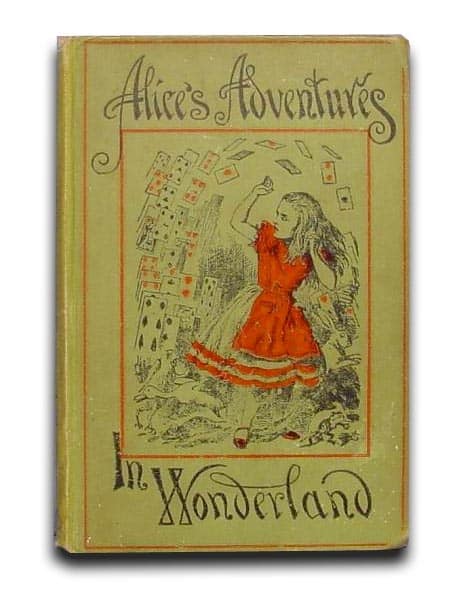
Alice’s Adventures in Wonderland (commonly shortened to Alice in Wonderland) is an 1865 novel by English author Lewis Carroll (the pseudonym of Charles Dodgson). It tells of a young girl named Alice, who falls through a rabbit hole into a subterranean fantasy world populated by peculiar, anthropomorphic creatures. It is considered to be one of the best examples of the literary nonsense genre. The tale plays with logic, giving the story lasting popularity with adults as well as with children.
Read More About Alice's Adventures in Wonderland / Source
Anne of Green Gables
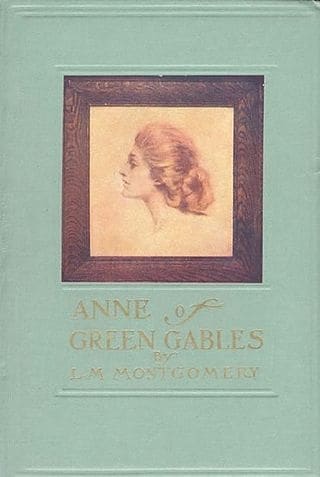
Anne of Green Gables is a 1908 novel by Canadian author Lucy Maud Montgomery (published as L.M. Montgomery). Written for all ages, it has been considered a classic children’s novel since the mid-twentieth century. Set in the late 19th century, the novel recounts the adventures of Anne Shirley, a 13-year-old orphan girl, who is mistakenly sent to two middle-aged siblings, Matthew and Marilla Cuthbert, who had originally intended to adopt a boy to help them on their farm in the fictional town of Avonlea in Prince Edward Island, Canada. The novel recounts how Anne makes her way through life with the Cuthberts, in school, and within the town.
Since its publication, Anne of Green Gables has been translated into at least 36 languages and has sold more than 50 million copies, making it one of the best selling books worldwide. The first in an anthology series, Montgomery wrote numerous sequels, and since her death, another sequel has been published, as well as an authorized prequel. The original book is taught to students around the world.The book has been adapted as films, made-for-television movies, and animated and live-action television series. Musicals and plays have also been created, with productions annually in Europe and Japan.
Read More About Anne of Green Gables / Source
Ballet Shoes
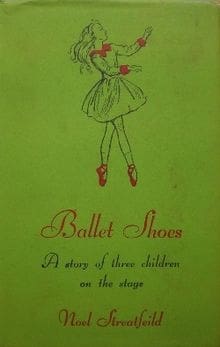
Ballet Shoes: A Story of Three Children on the Stage is a children’s novel by Noel Streatfeild, published by Dent in 1936. It was her first book for children, and was illustrated by the author’s sister, Ruth Gervis. Diane Goode illustrated a 1991 edition published by Random House.Ballet Shoes was a commended runner up for the inaugural Carnegie Medal from the Library Association, recognising the year’s best British children’s book by a British subject. (The author would win the award later for another book.)
Read More About Ballet Shoes / Source
Before We Were Free
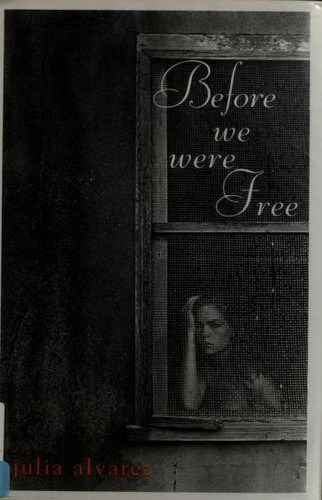
Before We Were Free is a realistic book by Julia Alvarez. In this book, Anita de la Torre is a 12-year-old girl living in the Dominican Republic in 1960. Many of his relatives emigrated to the United States, Tío Toni disappeared, Papi received mysterious calls about butterflies and Mr. Smith. The secret police started terrorizing his family, claiming that they were against the country’s dictator.
Read More About Before We Were Free / Source
Black Beauty
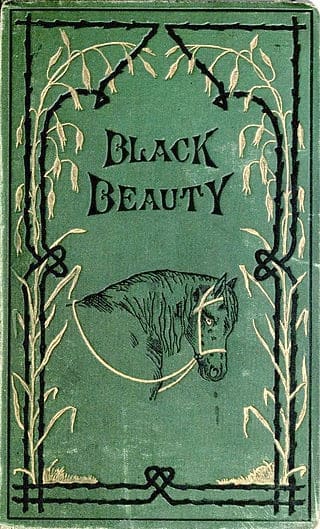
Black Beauty: His Grooms and Companions, the Autobiography of a Horse is an 1877 novel by English author Anna Sewell. It was composed in the last years of her life, during which she remained in her house as an invalid. The novel became an immediate best-seller, with Sewell dying just five months after its publication, but having lived long enough to see her only novel become a success. With fifty million copies sold, Black Beauty is one of the best-selling books of all time.While forthrightly teaching animal welfare, it also teaches how to treat people with kindness, sympathy, and respect. In 2003, the novel was listed at number 58 on the BBC’s survey The Big Read. It is seen as a forerunner of the pony book.
Read More About Black Beauty / Source
Charlie and the Chocolate Factory
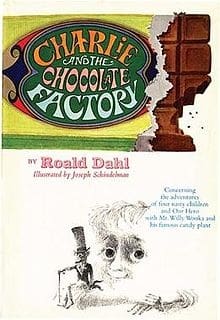
Charlie and the Chocolate Factory is a 1964 children’s novel by British author Roald Dahl. The story features the adventures of young Charlie Bucket inside the chocolate factory of eccentric chocolatier Willy Wonka.
Charlie and the Chocolate Factory was first published in the United States by Alfred A. Knopf, Inc. in 1964 and in the United Kingdom by George Allen & Unwin 11 months later. The book has been adapted into two major motion pictures: Willy Wonka & the Chocolate Factory in 1971, and Charlie and the Chocolate Factory in 2005. The book’s sequel, Charlie and the Great Glass Elevator, was written by Roald Dahl in 1971 and published in 1972. Dahl had also planned to write a third book in the series but never finished it.The story was originally inspired by Roald Dahl’s experience of chocolate companies during his schooldays. Cadbury would often send test packages to the schoolchildren in exchange for their opinions on the new products. At that time (around the 1920s), Cadbury and Rowntree’s were England’s two largest chocolate makers and they each often tried to steal trade secrets by sending spies, posing as employees, into the other’s factory. Because of this, both companies became highly protective of their chocolate-making processes. It was a combination of this secrecy and the elaborate, often gigantic, machines in the factory that inspired Dahl to write the story.
Read More About Charlie and the Chocolate Factory / Source
Charlotte's Web
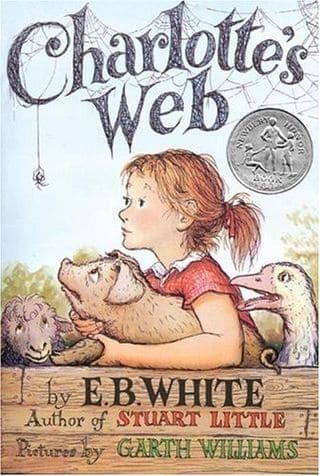
Charlotte’s Web is a book of children’s literature by American author E. B. White and illustrated by Garth Williams; it was published on October 15, 1952, by Harper & Brothers. The novel tells the story of a livestock pig named Wilbur and his friendship with a barn spider named Charlotte.
Read More About Charlotte's Web / Source
City of the Beasts

City of the Beasts (Spanish: La ciudad de las bestias) is the first young adult novel by Chilean-American writer Isabel Allende. Published in 2002, the story is set in the Amazon rainforest. The novel was translated by Margaret Sayers Peden from Spanish to English. Walden Media acquired the novel’s movie rights in 2006 but no film has yet been produced.
Read More About City of the Beasts / Source
Diary of a Wimpy Kid

Diary of a Wimpy Kid is a series of fiction books written by American author and cartoonist, Jeff Kinney. The books follow pre-teen Greg Heffley, who illustrates his daily life in a secret diary.In May 2004, FunBrain and Kinney released an online version of Diary of a Wimpy Kid. The website made daily entries until June 2005. Kinney worked on his book for almost eight years, before showing it to a publisher in New York. In February 2006, during the New York Comic Con, Kinney signed a multi-book deal with publisher Harry N. Abrams, Inc., to turn Diary of a Wimpy Kid into a print series.
Read More About Diary of a Wimpy Kid / Source
Emily of New Moon
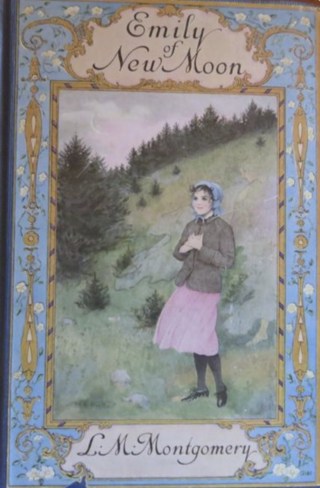
Emily of New Moon is the first in a series of novels by Lucy Maud Montgomery about an orphan girl growing up on Prince Edward Island. It is similar to the author’s Anne of Green Gables series.
It was first published in 1923.
Read More About Emily of New Moon / Source
Flowering Nettle
Flowering Nettle (Swedish: Nässlorna blomma) is a partly autobiographical novel written by the Swedish Nobel laureate Harry Martinson in 1935 and first translated into English by Naomi Walford in 1936.The book tells the story of the orphan child Martin, who is Harry Martinson’s alter ego and is written from the perspective of the child. Martin’s father dies and his mother leaves her children for a new life in California. Everything he holds dear disappear at a very early age and he grows up working in several farms and being sent away or going himself away, as he faces the harsh working life of the farmhand. Martin is described as a selfish, stupid, childish, selfpitying, obsequious, coward and false. Thus, there is no idealisation of the child.The language in the novel has been described as knowingly childlike.Flowering Nettle and its continuation The way out are partly autobiographical and show the hard and unsafe existence of an orphan child among the destitute in Sweden at the beginning of the 20th century.
Read More About Flowering Nettle / Source
Friday, or, The Other Island
Friday, or, The Other Island is a 1967 novel by French writer Michel Tournier. It retells Daniel Defoe’s Robinson Crusoe. The first edition of the book was published 15 March 1967. It won that year’s Grand Prix du roman de l’Académie française.
In 1971, Tournier rewrote the book, adapting it for younger readers, under the title Vendredi ou la Vie sauvage.
Read More About Friday, or, The Other Island / Source
Gaston (comics)
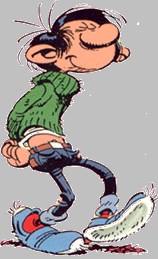
Gaston is a Belgian gag-a-day comic strip created in 1957 by the Belgian cartoonist André Franquin in the Franco-Belgian comics magazine Spirou. The series focuses on the everyday life of Gaston Lagaffe (whose surname means “the blunder”), a lazy and accident-prone office junior who works at Spirou’s office in Brussels. Gaston is very popular in large parts of Europe (especially in Belgium and France) and has been translated into over a dozen languages, but except for a few pages by Fantagraphics in the early 1990s (as Gomer Goof), there was no English translation until Cinebook began publishing English language editions of Gaston books (again named ‘Gomer Goof’) in July, 2017.Since the 1980s Gaston has appeared on a wide variety of merchandise.
Read More About Gaston (comics) / Source
Goodnight Mister Tom

Goodnight Mister Tom is a children’s novel by English author Michelle Magorian, published by Kestrel in 1981. Harper & Row published an American edition the same year. Set during World War II, it features a boy abused at home in London who is evacuated to the country at the outbreak of the war. In the care of Mister Tom, an elderly recluse, he experiences a new life of loving and care.
Magorian and Mister Tom won the annual once-or-lifetime Guardian Children’s Fiction Prize, judged by a panel of British children’s writers. She was also a commended runner-up for the Carnegie Medal from the British librarians, recognising the year’s best English-language children’s book published in the UK.The novel has been adapted as a stage musical and as the film Goodnight Mister Tom (1998). In 2003, it was listed at #49 on the BBC’s survey The Big Read. The most recent theatrical adaptation, Goodnight Mister Tom, won the Laurence Olivier Award for Best Entertainment.
Read More About Goodnight Mister Tom / Source
Goodnight Moon

Goodnight Moon is an American children’s book written by Margaret Wise Brown and illustrated by Clement Hurd. It was published on September 3, 1947, and is a highly acclaimed bedtime story.
This book is the second in Brown and Hurd’s “classic series”, which also includes The Runaway Bunny and My World. The three books have been published together as a collection titled Over the Moon.
Read More About Goodnight Moon / Source
Green Eggs and Ham

Green Eggs and Ham is a children’s book by Dr. Seuss, first published on August 12, 1960. As of 2019, the book has sold 8 million copies worldwide.
The story has appeared in several adaptations, starting with 1973’s Dr. Seuss on the Loose starring Paul Winchell as the voice of both Sam-I-Am and the first-person narrator, Guy-Am-I, and more recently an animated TV series of the same name on Netflix.
Read More About Green Eggs and Ham / Source
Harry Potter
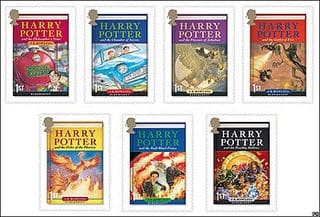
Harry Potter is a series of seven fantasy novels written by British author J. K. Rowling. The novels chronicle the lives of a young wizard, Harry Potter, and his friends Hermione Granger and Ron Weasley, all of whom are students at Hogwarts School of Witchcraft and Wizardry. The main story arc concerns Harry’s struggle against Lord Voldemort, a dark wizard who intends to become immortal, overthrow the wizard governing body known as the Ministry of Magic and subjugate all wizards and Muggles (non-magical people).
Read More About Harry Potter / Source
Heidi
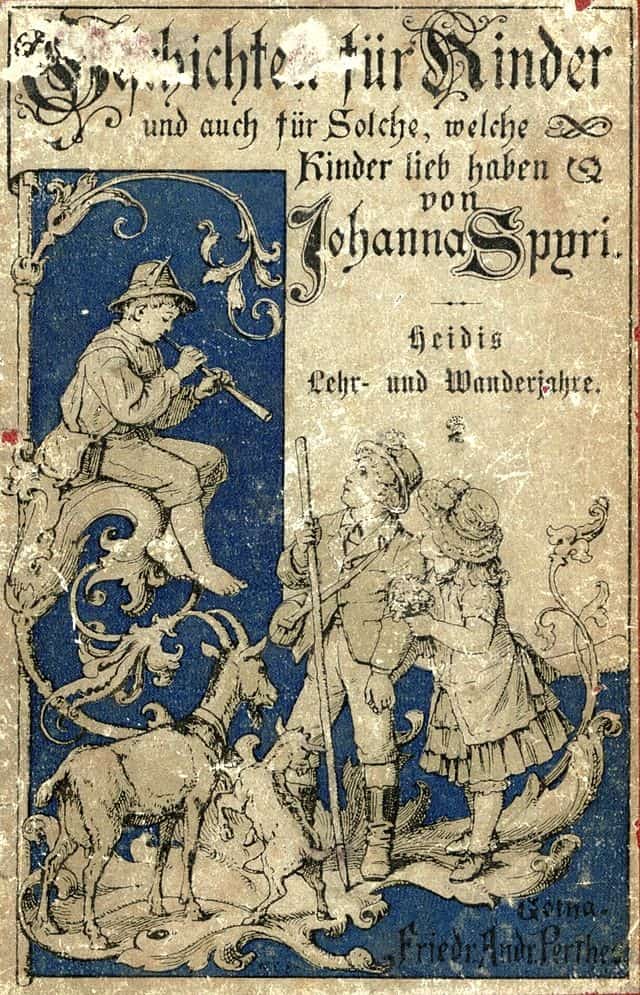
Heidi (; German: [ˈhaɪdi]) is a work of children’s fiction published in 1881 by Swiss author Johanna Spyri, originally published in two parts as Heidi: Her Years of Wandering and Learning (German: Heidis Lehr- und Wanderjahre) and Heidi: How She Used What She Learned (German: Heidi kann brauchen, was es gelernt hat).
It is a novel about the events in the life of a 5-year-old girl in her paternal grandfather’s care in the Swiss Alps. It was written as a book “for children and those who love children” (as quoted from its subtitle).
Heidi is one of the best-selling books ever written and is among the best-known works of Swiss literature.
Read More About Heidi / Source
His Dark Materials

His Dark Materials is a trilogy of fantasy novels by Philip Pullman consisting of Northern Lights (1995; published as The Golden Compass in North America), The Subtle Knife (1997), and The Amber Spyglass (2000). It follows the coming of age of two children, Lyra Belacqua and Will Parry, as they wander through a series of parallel universes. The novels have won a number of awards, including the Carnegie Medal in 1995 for Northern Lights and the 2001 Whitbread Book of the Year for The Amber Spyglass. In 2003, the trilogy was ranked third on the BBC’s The Big Read poll.Although His Dark Materials has been marketed as young adult fiction, Pullman wrote with no target audience in mind. The fantasy elements include witches and armoured polar bears; the trilogy also alludes to concepts from physics, philosophy, and theology. It functions in part as a retelling and inversion of John Milton’s epic Paradise Lost, with Pullman commending humanity for what Milton saw as its most tragic failing, original sin. The trilogy has attracted controversy for its criticism of religion.
The London Royal National Theatre staged a two-part adaptation of the trilogy in 2003–2004. New Line Cinema released a film adaptation of Northern Lights, The Golden Compass, in 2007. A BBC television series based on the novels commenced broadcast in November 2019.Pullman followed the trilogy with three novellas set in the Northern Lights universe; Lyra’s Oxford (2003), Once Upon a Time in the North (2008), and Serpentine (2020). La Belle Sauvage, the first book in a new trilogy titled The Book of Dust, was published on 19 October 2017; the second book of the new trilogy, The Secret Commonwealth, was published in October 2019. Both are set in the same universe as Northern Lights.
Read More About His Dark Materials / Source
The Little Elephant
L’Histoire de Babar, le petit éléphant (The story of Babar, the little elephant), FP 129, is a composition for narrator and piano by Francis Poulenc, based on Histoire de Babar and written from 1940.
Read More About The Little Elephant / Source
Grimms' Fairy Tales
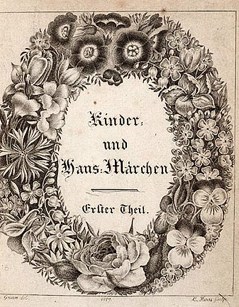
Grimms’ Fairy Tales, originally known as the Children’s and Household Tales is a German collection of fairy tales by the Grimm brothers or “Brothers Grimm”, Jacob and Wilhelm, first published on 20 December 1812. The first edition contained 86 stories, and by the seventh edition in 1857, had 210 unique fairy tales.
Read More About Grimms' Fairy Tales / Source
Little Women
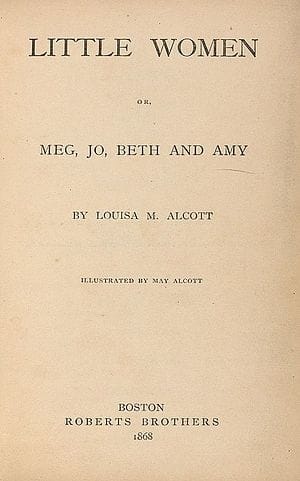
Little Women is a coming-of-age novel written by American novelist Louisa May Alcott (1832–1888).
Originally published in two volumes in 1868 and 1869, Alcott wrote the book over several months at the request of her publisher. The story follows the lives of the four March sisters—Meg, Jo, Beth, and Amy—and details their passage from childhood to womanhood. Loosely based on the lives of the author and her three sisters, it is classified as an autobiographical or semi-autobiographical novel. Little Women was an immediate commercial and critical success, with readers eager for more about the characters.
Read More About Little Women / Source
Matilda (novel)
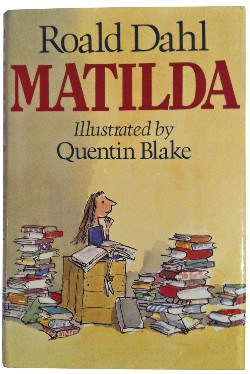
Matilda is a book by British writer Roald Dahl. It was published in 1988 by Jonathan Cape in London, with 232 pages and illustrations by Quentin Blake. It was adapted as an audio reading by actress Kate Winslet; a 1996 feature film directed by Danny DeVito; a two-part BBC Radio 4 programme starring Lauren Mote as Matilda, Emerald O’Hanrahan as Miss Honey, Nichola McAuliffe as Miss Trunchbull and narrated by Lenny Henry; and a 2010 musical.
Read More About Matilda (novel) / Source
Mio, My Son

Mio, My Son is a children’s book by Swedish writer Astrid Lindgren. It was first published in 1954 in Sweden, with the Swedish title Mio, min Mio. The writing is stylised and the story strongly reminiscent of traditional fairy tales and folklore. It received a German Youth Literature Prize (Deutschen Jugendbuchpreis) in 1956. The book is 204 pages long.
Read More About Mio, My Son / Source
Miss Pickerell Goes to Mars
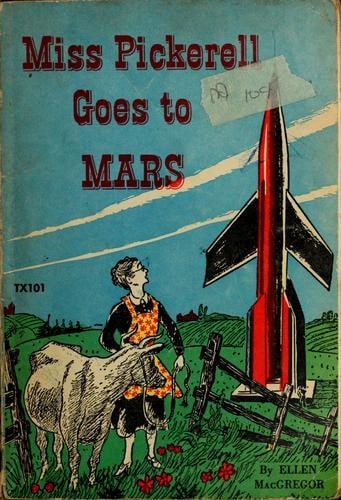
This page contains details about the fiction book Miss Pickerell Goes to Mars by Ellen McGregor, published in 1951. The story tells of how Miss Pickerel took off with the rocket ship and what she found on Mars.
Read More About Miss Pickerell Goes to Mars / Source
The theory of relativity

The theory of relativity usually encompasses two interrelated theories by Albert Einstein: special relativity and general relativity, proposed and published in 1905 and 1915, respectively. Special relativity applies to all physical phenomena in the absence of gravity. General relativity explains the law of gravitation and its relation to other forces of nature. It applies to the cosmological and astrophysical realm, including astronomy.
Read More About The theory of relativity / Source
The Chronicles Of Narnia

The Chronicles of Narnia series of films is based on The Chronicles of Narnia, a series of novels by C. S. Lewis. From the seven books, three were adapted—The Lion, the Witch and the Wardrobe (2005), Prince Caspian (2008), and The Voyage of the Dawn Treader (2010)—which collectively grossed over $1.5 billion worldwide. The series revolves around the adventures of children in the world of Narnia, guided by Aslan, a wise and powerful lion that can speak and is the true king of Narnia.
The Common Sense Book Of Baby And Child Care

The Common Sense Book of Baby and Child Care is a book by American pediatrician Benjamin Spock and one of the best-selling books of the twentieth century, selling 500,000 copies in the six months after its initial publication in 1946 and 50 million by the time of Spock’s death in 1998. As of 2011, the book had been translated into 39 languages. Spock and his manual helped revolutionize child-rearing methods for the post-World War II generation.
Read More About The Common Sense Book Of Baby And Child Care / Source
The Little Prince

The Little Prince French is a novella by French aristocrat, writer, and aviator Antoine de Saint-Exupéry. It was first published in English and French in the US by Reynal & Hitchcock in April 1943, and posthumously in France following the liberation of France as Saint-Exupéry’s works had been banned by the Vichy Regime.
Read More About The Little Prince / Source
The Railway Children
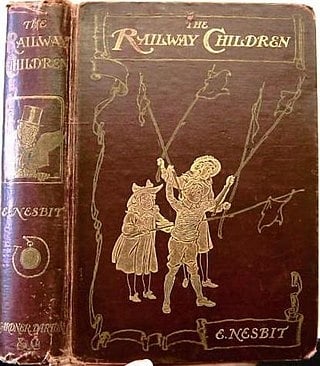
The Railway Children is a children’s book by Edith Nesbit, originally serialised in The London Magazine during 1905 and first published in book form in 1906. It has been adapted for the screen several times, of which the 1970 film version is the best known. The Oxford Dictionary of National Biography credits Oswald Barron, who had a deep affection for Nesbit, with having provided the plot. The setting is thought to be inspired by Edith’s walks to Grove Park nature reserve, close to where she lived on Baring Rd.
Read More About The Railway Children / Source
The Secret Garden

The Secret Garden is a novel by Frances Hodgson Burnett first published in book form in 1911, after serialisation in The American Magazine (November 1910 – August 1911). Set in England, it is one of Burnett’s most popular novels and seen as a classic of English children’s literature. Several stage and film adaptations have been made. The American edition was published by the Frederick A.
Read More About The Secret Garden / Source
Three Cups Of Tea

Three Cups of Tea: One Man’s Mission to Promote Peace … One School at a Time is a memoir book by Greg Mortenson and David Oliver Relin published by Penguin in 2007. The book describes Mortenson’s transition from a registered nurse and mountain climber to a humanitarian committed to reducing poverty and elevating education for girls in Pakistan and Afghanistan.
Read More About Three Cups Of Tea / Source
The Witches
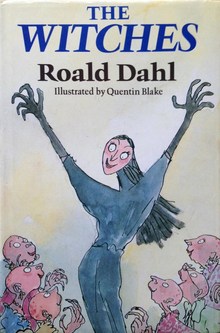
The Witches is a British children’s dark fantasy novel by the British writer Roald Dahl. The story is set partly in Norway and partly in England, and features the experiences of a young English boy and his Norwegian grandmother in a world where child-hating societies of witches secretly exist in every country.
Read More About The Witches / Source
Treasure Island
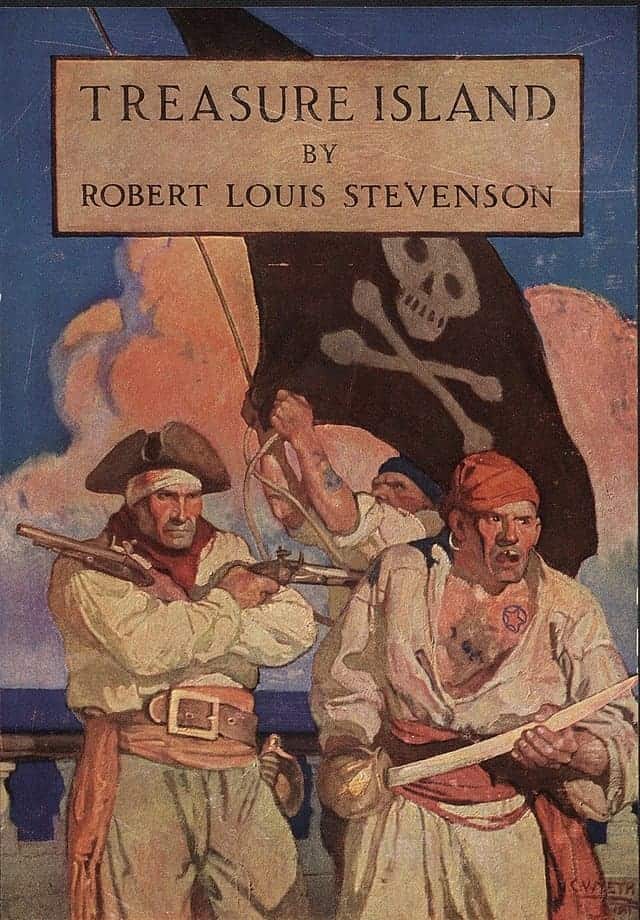
Treasure Island is an adventure novel by Scottish author Robert Louis Stevenson, narrating a tale of “buccaneers and buried gold”, serialized 1881–82. Its influence is enormous on popular perceptions of pirates, making popular such elements as treasure maps marked with an “X”, schooners, the Black Spot, tropical islands, and one-legged seamen bearing parrots on their shoulders.
Read More About Treasure Island / Source
The Song of Hiawatha
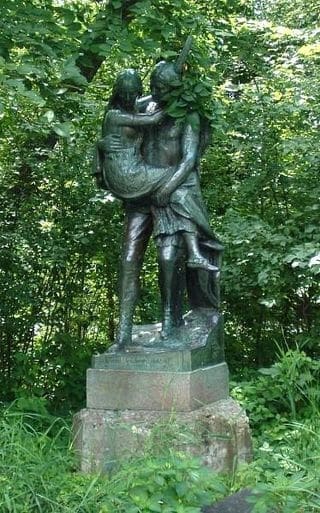
The Song of Hiawatha is an 1855 epic poem in trochaic tetrameter by Henry Wadsworth Longfellow which features Native American characters. The epic relates the fictional adventures of an Ojibwe warrior named Hiawatha and the tragedy of his love for Minnehaha, a Dakota woman.
Read More About The Song of Hiawatha / Source
The Merry Adventures of Robin Hood
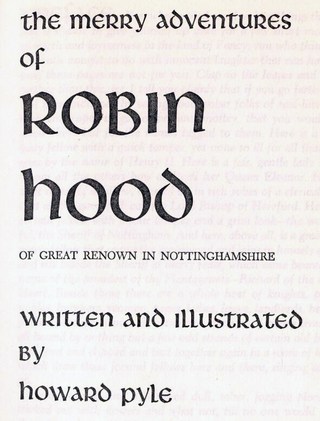
The Merry Adventures of Robin Hood of Great Renown in Nottinghamshire is an 1883 novel by the American illustrator and writer Howard Pyle. Consisting of a series of episodes in the story of the English outlaw Robin Hood and his band of Merry Men.
Read More About The Merry Adventures of Robin Hood / Source
The Education of Little Tree
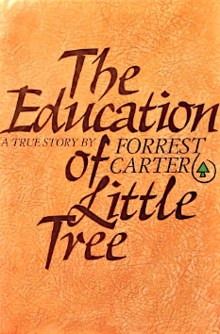
The Education of Little Tree is a memoir-style novel written by Asa Earl Carter under the pseudonym Forrest Carter. First published in 1976 by Delacorte Press, it was initially promoted as an authentic autobiography recounting Forrest Carter’s youth experiences with his Cherokee grandparents in the Appalachian mountains.
Read More About The Education of Little Tree / Source
The Boy in the Striped Pyjamas

The Boy in the Striped Pyjamas is a 2006 Holocaust novel by Irish novelist John Boyne. Much like the process he undertakes when writing most of his novels, Boyne has said that he wrote the entire first draft in two and a half days, without sleeping much.
Read More About The Boy in the Striped Pyjamas / Source
The Call of the Wild
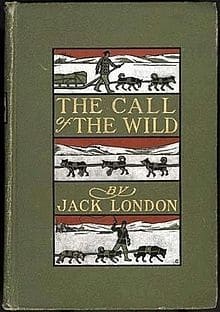
The Call of the Wild is a short adventure novel by Jack London, published in 1903 and set in Yukon, Canada, during the 1890s Klondike Gold Rush, when strong sled dogs were in high demand. The central character of the novel is a dog named Buck.
Read More About The Call of the Wild / Source
The Adventures of Huckleberry Finn
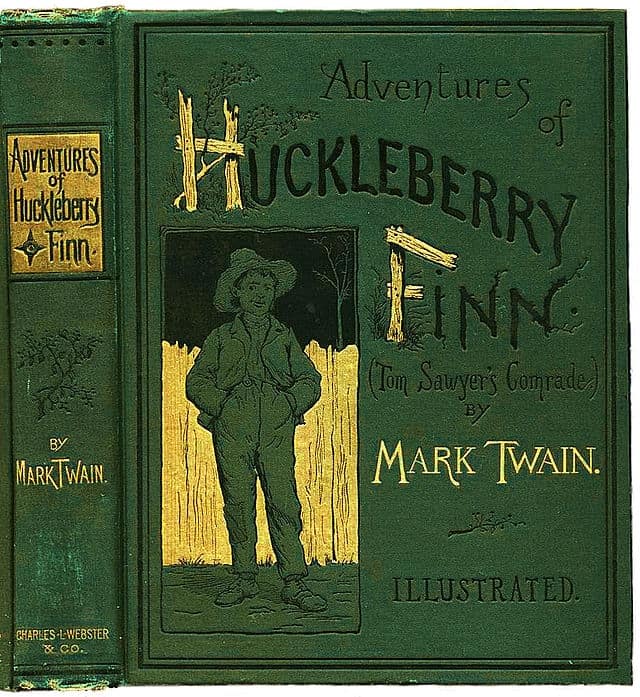
Adventures of Huckleberry Finn (or, as it is known in more recent editions, The Adventures of Huckleberry Finn) is a novel by American author Mark Twain, which was first published in the United Kingdom in December 1884 and in the United States in February 1885.
Read More About The Adventures of Huckleberry Finn / Source
The Adventures of Tom Sawyer
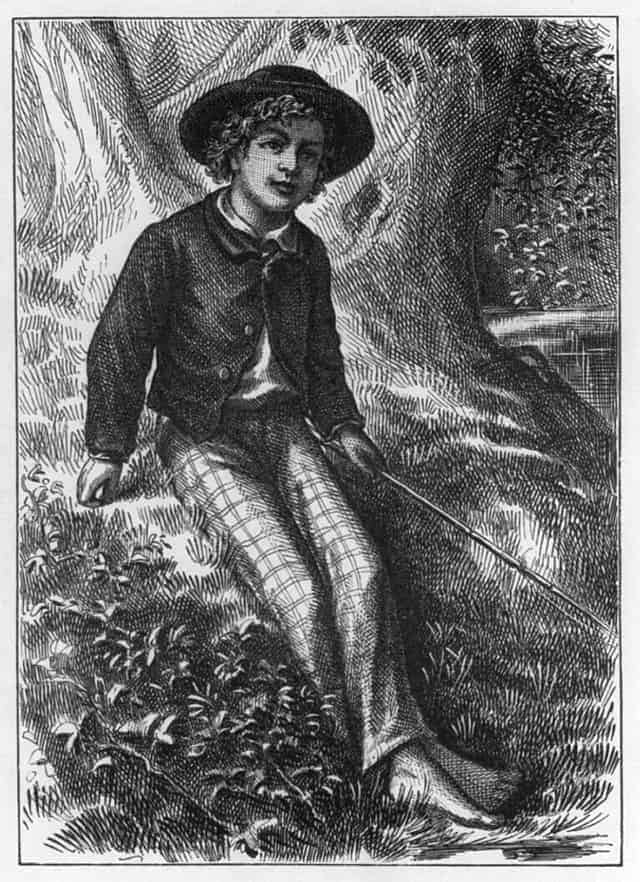
The Adventures of Tom Sawyer is an 1876 novel by Mark Twain about a boy growing up along the Mississippi River. It is set in the 1840s in the town of St. Petersburg, which is based on Hannibal, Missouri, where Twain lived as a boy.
Read More About The Adventures of Tom Sawyer / Source
Smoky the Cowhorse
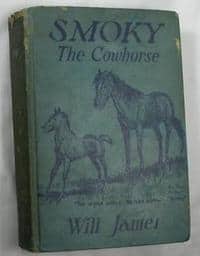
Smoky the Cowhorse is a novel by Will James that was the winner of the 1927 Newbery Medal. The story details the life of a horse in the western United States from his birth to his eventual decline.
Read More About Smoky the Cowhorse / Source
The Wizard of Oz
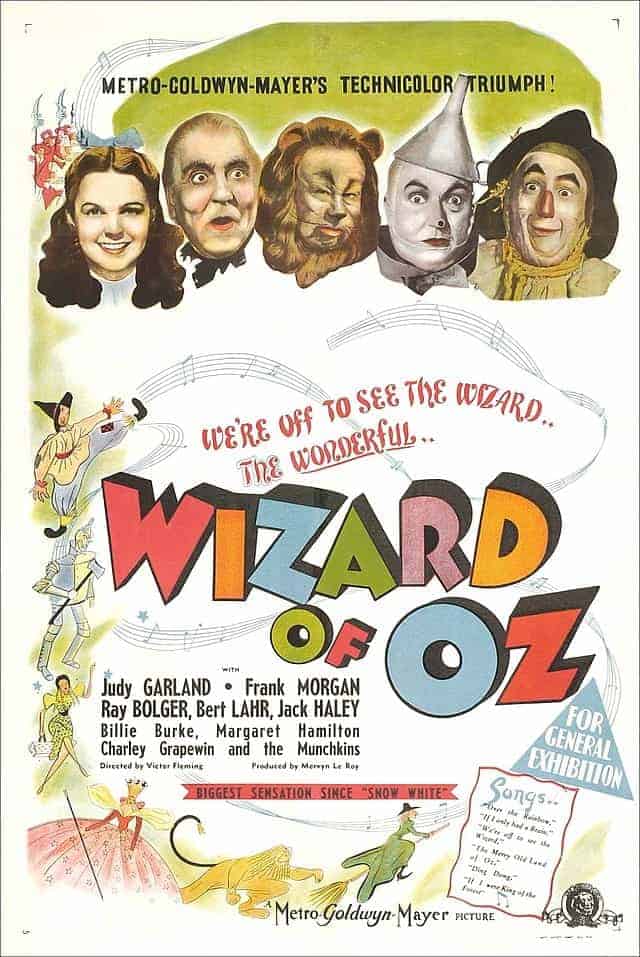
The Wizard of Oz is a 1939 American musical fantasy film produced by Metro-Goldwyn-Mayer. An adaptation of L. Frank Baum’s 1900 children’s fantasy novel The Wonderful Wizard of Oz, the film was primarily directed by Victor Fleming , and stars Judy Garland, Frank Morgan, Ray Bolger, Bert Lahr, Jack Haley, Billie Burke and Margaret Hamilton.
Read More About The Wizard of Oz / Source
The Bad Beginning
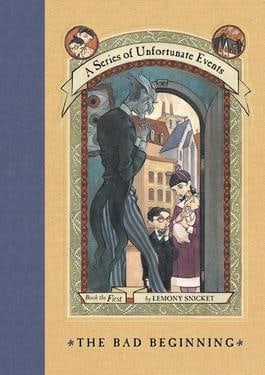
The Bad Beginning is the first novel of the children’s novel series A Series of Unfortunate Events by Lemony Snicket. The novel tells the story of three children, Violet, Klaus, and Sunny Baudelaire, who become orphans following a fire and are sent to live with Count Olaf, who attempts to steal their inheritance.
The book was published on September 30, 1999, by Scholastic Inc. and illustrated by Brett Helquist. An audiobook was released in 2003 with narration by Tim Curry, several special editions of the book have been made and the book has been translated into many different languages. There is a movie based on the series starring Jim Carrey and a Netflix TV mini-series starring Neil Patrick Harris.
Read More About The Bad Beginning / Source
Winnie-the-Pooh
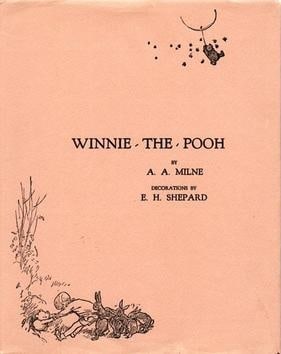
Winnie-the-Pooh is a children’s book by English author A. A. Milne and English illustrator E. H. Shepard. Published in 1926, it is a collection of short stories about an anthropomorphic teddy bear, Winnie-the-Pooh, and his friends Christopher Robin, Piglet, Eeyore, Owl, Rabbit, Kanga, and Roo. It is the first of two story collections by Milne about Winnie-the-Pooh, the second being The House at Pooh Corner (1928).
Milne and Shepard collaborated previously for English humour magazine Punch, and in 1924 created When We Were Very Young, a poetry collection. Among the characters in the poetry book was a teddy bear Shepard modeled after his son’s toy. Following this, Shepard encouraged Milne to write about his son Christopher Robin Milne’s toys, and so they became the inspiration for the characters in Winnie-the-Pooh.
The book was well-received at release, and was a commercial success, selling 150,000 copies before the end of the year. Critical analysis of the book has held that it represents a rural Arcadia, separated from real-world issues or problems, and is without purposeful subtext. More recently, criticism has been levelled at the lack of positive female characters, i.e. that the only female character, Kanga, is depicted as a bad mother. Winnie-the-Pooh has been translated into over fifty languages; a 1958 Latin translation, Winnie ille Pu, was the first foreign-language book to be featured on the New York Times Best Seller List, and the only book in Latin ever to have been featured. The stories and characters in the book have been adapted in other media, most notably by Disney beginning with Winnie the Pooh and the Honey Tree (1966).
Read More About Winnie-the-Pooh / Source
Where the Wild Things Are

Where the Wild Things Are is a 1963 children’s picture book by American writer and illustrator Maurice Sendak, originally published by Harper & Row. The book has been adapted into other media several times, including an animated short in 1975 (with an updated version in 1988); a 1980 opera; and a live-action 2009 feature-film adaptation. The book had sold over 19 million copies worldwide as of 2009, with 10 million of those being in the United States.Sendak won the annual Caldecott Medal from the children’s librarians in 1964, recognizing Wild Things as the previous year’s “most distinguished American picture book for children”. It was voted the number one picture book in a 2012 survey of School Library Journal readers, not for the first time.
Read More About Where the Wild Things Are / Source
Where the Sidewalk Ends

Where the Sidewalk Ends is a 1974 children’s poetry collection written and illustrated by Shel Silverstein. It was published by Harper and Row Publishers. The book’s poems address many common childhood concerns and also present purely fanciful stories and imagination inspiring images. Based on a 2007 online poll, the National Education Association list the book as one of its “Teachers’ Top 100 Books for Children.” Controversial because of profanity and subject matter, the book was banned in many libraries and schools.A 30th Anniversary Edition of the book appeared in 2004, and two audio editions (1983 and 2000) are also available.
Read More About Where the Sidewalk Ends / Source
We're Going on a Bear Hunt
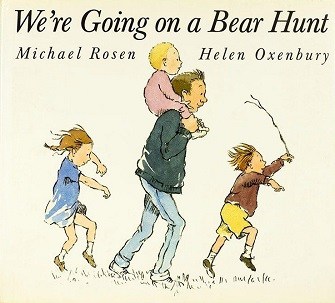
We’re Going on a Bear Hunt is a 1989 children’s picture book written by Michael Rosen and illustrated by Helen Oxenbury. It has won numerous awards and was the subject of a Guinness World Record for “Largest Reading Lesson” with a book-reading attended by 1,500 children, and an additional 30,000 listeners online, in 2014.
Read More About We're Going on a Bear Hunt / Source
Watership Down
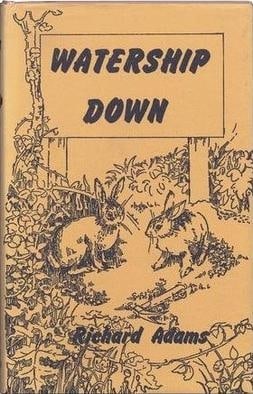
Watership Down is an adventure novel by English author Richard Adams, published by Rex Collings Ltd of London in 1972. Set in southern England, around Hampshire, the story features a small group of rabbits. Although they live in their natural wild environment, with burrows, they are anthropomorphised, possessing their own culture, language, proverbs, poetry, and mythology. Evoking epic themes, the novel follows the rabbits as they escape the destruction of their warren and seek a place to establish a new home (the hill of Watership Down), encountering perils and temptations along the way.
Watership Down was Richard Adams’ debut novel. It was rejected by several publishers before Collings accepted the manuscript; the published book then won the annual Carnegie Medal (UK), annual Guardian Prize (UK), and other book awards. The novel was adapted into an animated feature film in 1978 and, from 1999 to 2001, an animated children’s television series. In 2018, a drama of the story was made, which both aired in the UK and was made available on Netflix.
Adams completed a sequel almost 25 years later, in 1996, Tales from Watership Down, constructed as a collection of 19 short stories about El-ahrairah and the rabbits of the Watership Down warren.
Read More About Watership Down / Source
Through the Looking-Glass
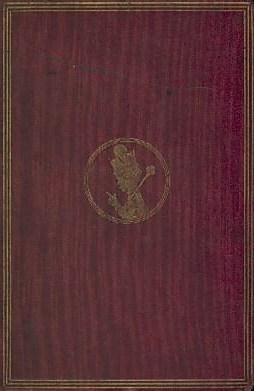
Through the Looking-Glass, and What Alice Found There (also known as Alice Through the Looking-Glass or simply Through the Looking-Glass) is a novel published on 27 December 1871 (though indicated as 1872) by Lewis Carroll and the sequel to Alice’s Adventures in Wonderland (1865). Alice again enters a fantastical world, this time by climbing through a mirror into the world that she can see beyond it. There she finds that, just like a reflection, everything is reversed, including logic (for example, running helps one remain stationary, walking away from something brings one towards it, chessmen are alive, nursery rhyme characters exist, and so on).
Through the Looking-Glass includes such verses as “Jabberwocky” and “The Walrus and the Carpenter”, and the episode involving Tweedledum and Tweedledee. The mirror above the fireplace that is displayed at Hetton Lawn in Charlton Kings, Gloucestershire (a house that was owned by Alice Liddell’s grandparents, and was regularly visited by Alice and Lewis Carroll) resembles the one drawn by John Tenniel and is cited as a possible inspiration for Carroll.It was the first of the “Alice” stories to gain widespread popularity, and prompted a newfound appreciation for its predecessor when it was published.
Read More About Through the Looking-Glass / Source
The Worst Witch

The Worst Witch is a series of children’s books written and illustrated by Jill Murphy. The series are primarily about a girl who attends a witch school and fantasy stories, with eight books published. The first, The Worst Witch, was published in 1974 by Allison & Busby, and the most recent, First Prize for the Worst Witch, was published in 2018 by Puffin Books, the current publisher of the series. The books have become some of the most successful titles on the Young Puffin paperback list and have sold more than 5 million copies.In 1986, the first book in the series was made into a television film of the same name. A TV series based on the book aired from 1998 to 2001, and has inspired two spin-offs, Weirdsister College, aired in 2001, and The New Worst Witch, aired in 2005. A new adaptation, co-production of CBBC, ZDF, and Netflix premiered in 2017.
Read More About The Worst Witch / Source
The Wonderful Story of Henry Sugar
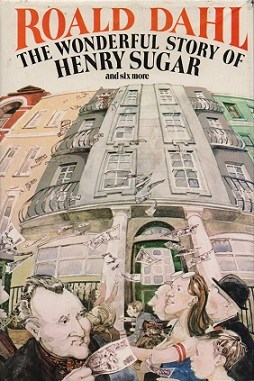
The Wonderful Story of Henry Sugar and Six More is a collection of seven short stories written by Roald Dahl. They are generally regarded as being aimed at a slightly older audience than many of his other children’s books.
The stories were written at varying times throughout his life. Two of the stories are autobiographical in nature; one describes how he first became a writer while the other describes some of Dahl’s experiences as a fighter pilot in the Second World War. Another piece in the collection is a non-fiction account of a British farmer finding a legendary haul of ancient Roman treasure. The book was first published in London in 1977 by Jonathan Cape.
Read More About The Wonderful Story of Henry Sugar / Source
The Wonderful Adventures of Nils
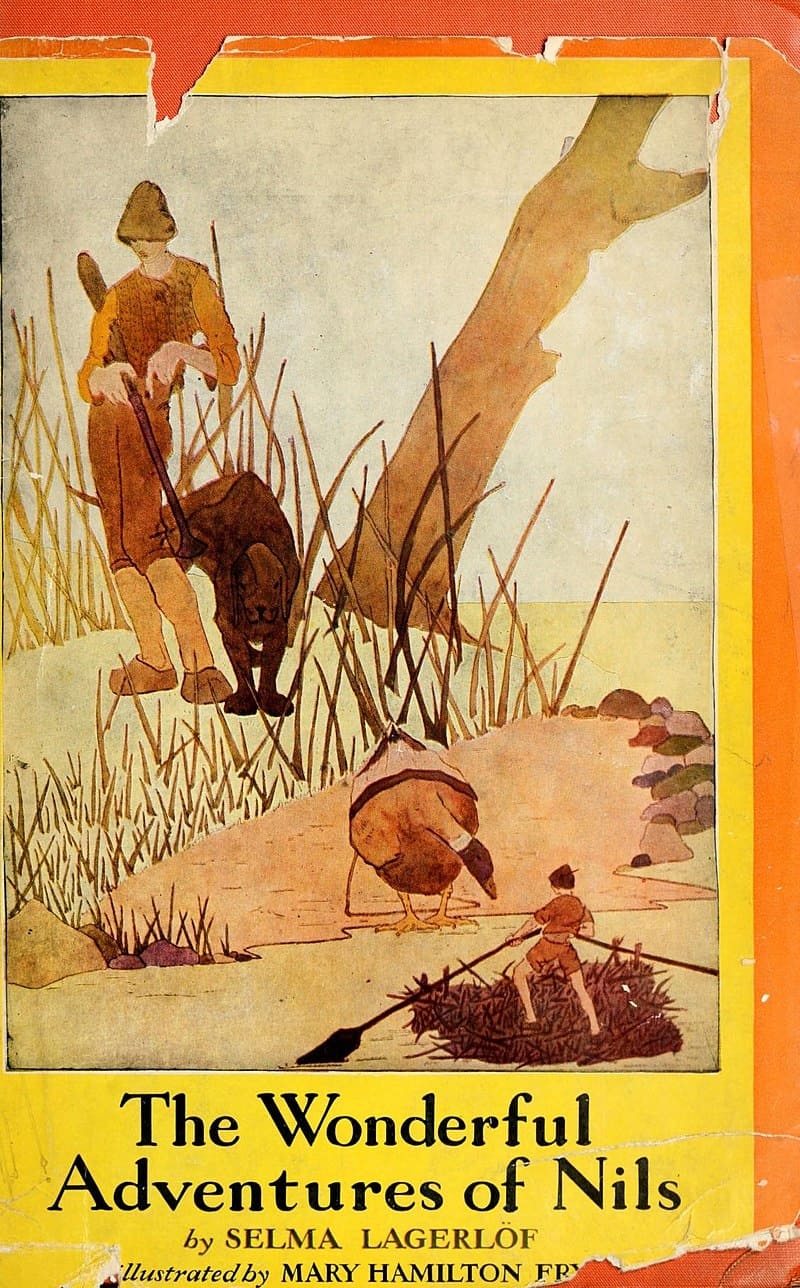
The Wonderful Adventures of Nils (orig. Nils Holgerssons underbara resa genom Sverige; literally Nils Holgersson’s wonderful journey across Sweden) is a work of fiction by the Swedish writer Selma Lagerlöf, the first woman to receive the Nobel Prize in literature. It was originally published in two books, 1906 and 1907, and was first published in English as The Wonderful Adventures of Nils (1907) and The Further Adventures of Nils (1911). The two parts are later usually published together, in English as The Wonderful Adventures of Nils, but that name may also refer to the first part alone.
Like many leading Swedish intellectuals of her time, Selma Lagerlöf was an advocate of Swedish spelling reform. When first published, this book was also one of the first to adopt the new spelling mandated by a government resolution on April 7, 1906 (see Svenska Akademiens Ordlista).
Read More About The Wonderful Adventures of Nils / Source
The Wind on the Moon
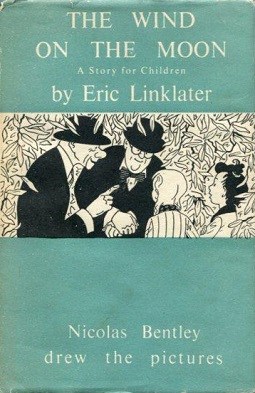
The Wind on the Moon: A story for children is a fantasy novel by Eric Linklater, published by Macmillan in 1944 with illustrations by Nicolas Bentley. The American division Macmillan US published an edition in the same year. Opening in the fictitious village of Midmeddlecum, evidently in contemporary rural England, it features two girls whose father is absent during a war. They pursue magical, bizarre, or dangerous experiences. A “wind on the moon” is said to be the cause, “making them behave badly for a year”.Linklater won the annual Carnegie Medal from the Library Association, recognizing the year’s best children’s book by a British subject.
Read More About The Wind on the Moon / Source
The Wind in the Willows

The Wind in the Willows is a children’s book by the British novelist Kenneth Grahame, first published in 1908. Alternatingly slow-moving and fast-paced, it focuses on four anthropomorphised animals: Mole, Rat (a European water vole), Toad, and Badger. They live in a pastoral version of Edwardian England.
In 1908, Grahame retired from his position as secretary of the Bank of England. He moved back to Berkshire, where he had lived as a child, and spent his time by the River Thames, doing much as the animal characters in his book do – to quote, “simply messing about in boats” – and expanding the bedtime stories he had earlier told his son Alastair into a manuscript for the book.
The novel was in its 31st printing when A. A. Milne adapted part of it for the stage as Toad of Toad Hall in 1929. The first film adaptation was produced by Walt Disney as one of two segments in the 1949 package film The Adventures of Ichabod and Mr. Toad. Numerous adaptations in film and television have followed since.
In 2003, The Wind in the Willows was listed at #16 in the BBC’s survey The Big Read. More than a century after its original publication, it was adapted again for the stage, as a 2014 musical by Julian Fellowes.
Read More About The Wind in the Willows / Source
The Wanderer
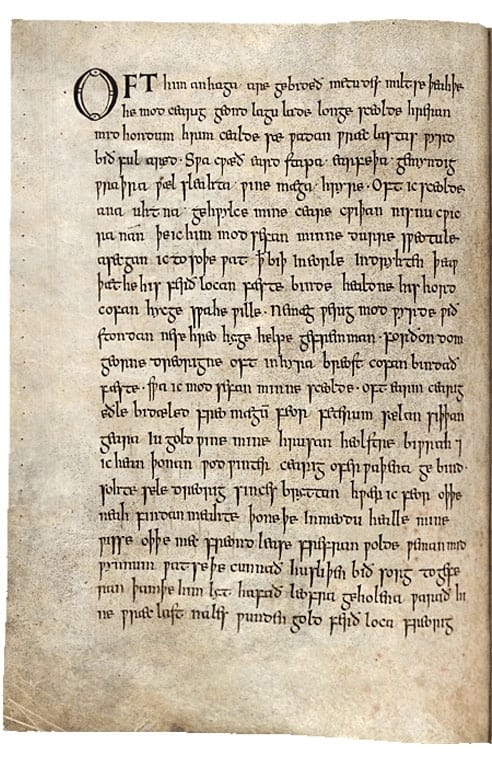
The Wanderer is an Old English poem preserved only in an anthology known as the Exeter Book, a manuscript dating from the late 10th century. It counts 115 lines of alliterative verse. As is often the case in Anglo-Saxon verse, the composer and compiler are anonymous, and within the manuscript the poem is untitled.
Read More About The Wanderer / Source
The Voyages of Doctor Dolittle
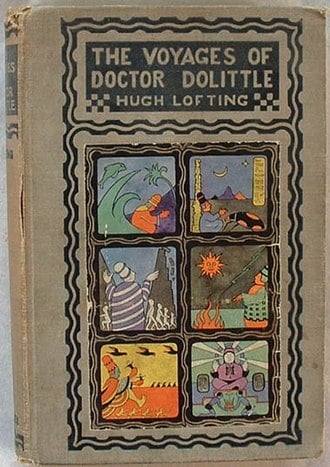
The Voyages of Doctor Dolittle is the second of Hugh Lofting’s Doctor Dolittle books. Published in 1922, the writing style is aimed at a more mature audience and features more sophisticated illustrations than its predecessor. The novel’s scope is vast; it is nearly five times as long as its predecessor and is divided into six parts. It won the Newbery Medal for 1923.
Along with other novels in the series, it was adapted into the 1967 film Doctor Dolittle.
Read More About The Voyages of Doctor Dolittle / Source
The Very Hungry Caterpillar

The Very Hungry Caterpillar is a children’s picture book designed, illustrated, and written by Eric Carle, first published by the World Publishing Company in 1969, later published by Penguin Putnam. The book features a very hungry caterpillar who eats his way through a wide variety of foodstuffs before pupating and emerging as a butterfly. The winner of many children’s literature awards and a major graphic design award, it has sold almost 50 million copies worldwide. It has been described as having sold the equivalent of a copy per minute since its publication, and as “one of the greatest childhood classics of all time”. It was voted the number two children’s picture book in a 2012 survey of School Library Journal readers.The Very Hungry Caterpillar is Carle’s third book, and uses distinctive collage illustrations that were innovative at the time of publication, ‘eaten’ holes in the pages, and simple text with educational themes – counting, the days of the week, foods, and a butterfly’s life stages. It teaches children how to count and to make one-to-one correspondences between numbers and the items the Very Hungry Caterpillar has eaten. There have been many related books and other products, including educational tools, created in connection to the book. The Very Hungry Caterpillar’s diet is fictional rather than scientifically accurate, but the book introduces concepts of Lepidoptera life stages where transformations take place including the ultimate metamorphosis from ‘hungry caterpillar’ to ‘beautiful butterfly’, and it has been endorsed by the Royal Entomological Society.
Read More About The Very Hungry Caterpillar / Source
The Tiger Who Came to Tea
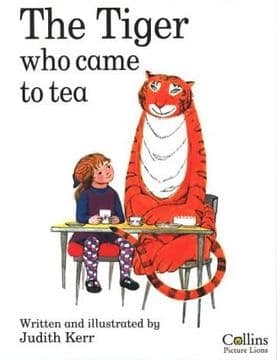
The Tiger Who Came to Tea is a short children’s story, first published by HarperCollins in 1968, written and illustrated by Judith Kerr. The book concerns a girl called Sophie, her mother, and an anthropomorphised tiger who invites himself to their afternoon tea and consumes all the food and drink they have. The book remains extremely popular more than 50 years after it was first published, and a theatrical adaptation of the story has been produced. A television adaptation of the book aired on UK’s Channel 4 on Christmas Eve 2019 at 7:30pm GMT.
The original artwork for the book is held by Seven Stories, a children’s literature centre in the UK.
Read More About The Tiger Who Came to Tea / Source
The Tale of Peter Rabbit
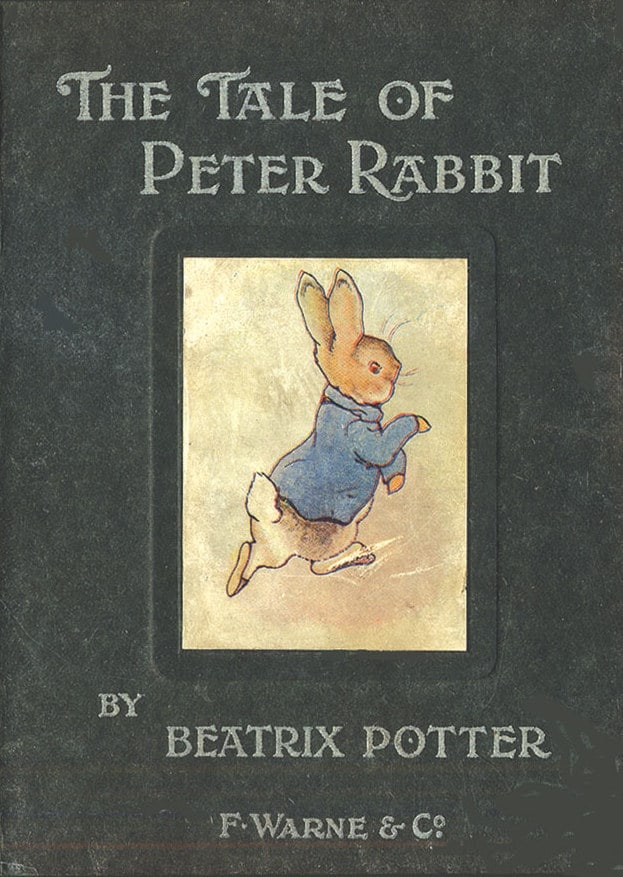
The Tale of Peter Rabbit is a children’s book written and illustrated by Beatrix Potter that follows mischievous and disobedient young Peter Rabbit as he gets into, and is chased around, the garden of Mr. McGregor. He escapes and returns home to his mother, who puts him to bed after offering him chamomile-tea. The tale was written for five-year-old Noel Moore, son of Potter’s former governess Annie Carter Moore, in 1893. It was revised and privately printed by Potter in 1901 after several publishers’ rejections, but was printed in a trade edition by Frederick Warne & Co. in 1902. The book was a success, and multiple reprints were issued in the years immediately following its debut. It has been translated into 36 languages, and with 45 million copies sold it is one of the best-selling books in history.Since its release, the book has generated considerable merchandise for both children and adults, including toys, dishes, foods, clothing, and videos. Potter was one of the first to be responsible for such merchandise when she patented a Peter Rabbit doll in 1903 and followed it almost immediately with a Peter Rabbit board game.
Peter Rabbit has remained popular amongst children for more than a century and continues to be adapted and expanded through new book editions, television and film.
Read More About The Tale of Peter Rabbit / Source
The Story of Tracy Beaker

The Story of Tracy Beaker is a British children’s book first published in 1991, written by Jacqueline Wilson and illustrated by Nick Sharratt.
Read More About The Story of Tracy Beaker / Source
The Prince and the Pauper
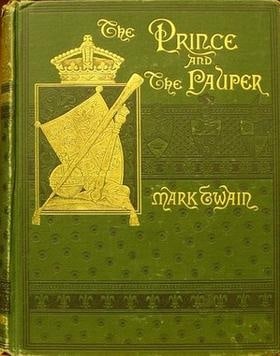
The Prince and the Pauper is a novel by American author Mark Twain. It was first published in 1881 in Canada, before its 1882 publication in the United States. The novel represents Twain’s first attempt at historical fiction. Set in 1547, it tells the story of two young boys who were born on the same day and are identical in appearance: Tom Canty, a pauper who lives with his abusive, alcoholic father in Offal Court off Pudding Lane in London, and Edward VI of England, son of Henry VIII of England.
Read More About The Prince and the Pauper / Source
The Plague

The Plague (French: La Peste) is a novel by Albert Camus. Published in 1947, it tells the story from the point of view of a narrator of a plague sweeping the French Algerian city of Oran. The narrator remains unknown until the start of the last chapter, chapter 5 of part 5. The novel presents a snapshot of life in Oran as seen through the author’s distinctive absurdist point of view.Camus used as source material the cholera epidemic that killed a large proportion of Oran’s population in 1849, but situated the novel in the 1940s. Oran and its surroundings were struck by disease several times before Camus published his novel. According to an academic study, Oran was decimated by the bubonic plague in 1556 and 1678, but all later outbreaks (in 1921: 185 cases; 1931: 76 cases; and 1944: 95 cases) were very far from the scale of the epidemic described in the novel.The Plague is considered an existentialist classic despite Camus’ objection to the label. The novel stresses the powerlessness of the individual characters to affect their destinies. The narrative tone is similar to Kafka’s, especially in The Trial, whose individual sentences potentially have multiple meanings; the material often pointedly resonating as stark allegory of phenomenal consciousness and the human condition.
Read More About The Plague / Source
The Phantom Tollbooth
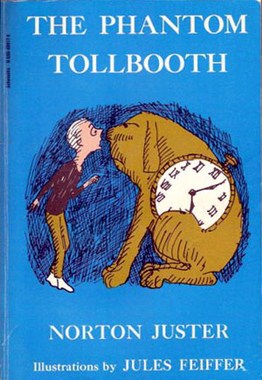
The Phantom Tollbooth is a children’s fantasy adventure novel written by Norton Juster, with illustrations by Jules Feiffer, first published in 1961. The story follows a bored young boy named Milo who unexpectedly receives a magic tollbooth that transports him to the once prosperous, but now troubled, Kingdom of Wisdom. Along with a dog named Tock and the Humbug, Milo goes on a quest to the Castle in the Air seeking the kingdom’s two exiled princesses, named Rhyme and Reason. As Milo learns valuable lessons, he finds a love of learning in a story full of puns and wordplay, such as exploring the literal meanings of idioms.
In 1958, Juster had received a Ford Foundation grant for a children’s book about cities. Unable to make progress on that project, he turned to writing what became The Phantom Tollbooth, his first book. His housemate, Feiffer, a cartoonist, interested himself in the project. Jason Epstein, an editor at Random House, bought the book and published it. The Phantom Tollbooth received rave reviews and has sold in excess of three million copies, far more than expected. It has been adapted into a film, opera, and play, and translated into many languages.
Though the book is on its face an adventure story, a major theme is the need for a love of education; through this, Milo applies what he has learned in school, advances in his personal development, and learns to love the life that previously bored him. Critics have compared its appeal to that of Lewis Carroll’s Alice’s Adventures in Wonderland and to L. Frank Baum’s The Wonderful Wizard of Oz. Additionally Maurice Sendak, in his introductory “An Appreciation” included in editions of the book since 1996, quotes a critic as comparing The Phantom Tollbooth to Bunyan’s Pilgrim’s Progress: “As Pilgrim’s Progress is concerned with the awakening of the sluggardly spirit, The Phantom Tollbooth is concerned with the awakening of the lazy mind.”
Read More About The Phantom Tollbooth / Source
The Little Grey Men
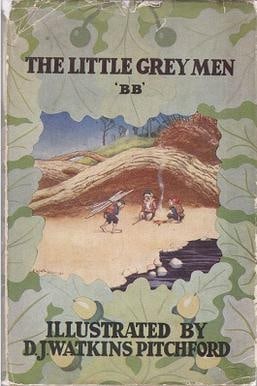
The Little Grey Men: A story for the young in heart is a children’s fantasy novel written by Denys Watkins-Pitchford under the nom de plume “BB” and illustrated by the author under his real name. It was first published by Eyre & Spottiswoode in 1942 and it has been reissued several times. Set in the English countryside, it features the adventures of four gnomes who may be the last of their race. At the same time it features the countryside during three seasons of the year.
Watkins-Pitchford won the 1942 Carnegie Medal recognising The Little Grey Men as the year’s best children’s book by a British subject.A sequel was published in 1948, Down the Bright Stream; later issued as The Little Grey Men Go Down the Bright Stream (Methuen, 1977). Jointly they may be called the Little Grey Men series.The original novel was adapted for television in 1975.
Read More About The Little Grey Men / Source
The Lion, the Witch, and the Wardrobe

The Lion, the Witch and the Wardrobe is a fantasy novel for children by C. S. Lewis, published by Geoffrey Bles in 1950. It is the first published and best known of seven novels in The Chronicles of Narnia (1950–1956). Among all the author’s books, it is also the most widely held in libraries. Although it was originally the first of The Chronicles of Narnia, it is volume two in recent editions that are sequenced by the stories’ chronology. Like the other Chronicles, it was illustrated by Pauline Baynes, and her work has been retained in many later editions.Most of the novel is set in Narnia, a land of talking animals and mythical creatures that is ruled by the evil White Witch. In the frame story, four English children are relocated to a large, old country house following a wartime evacuation. The youngest, Lucy, visits Narnia three times via the magic of a wardrobe in a spare room. Lucy’s three siblings are with her on her third visit to Narnia. In Narnia, the siblings seem fit to fulfill an old prophecy and find themselves adventuring to save Narnia and their own lives. The lion Aslan gives his life to save one of the children; he later rises from the dead, vanquishes the White Witch, and crowns the children Kings and Queens of Narnia.
Lewis wrote the book for (and dedicated it to) his goddaughter, Lucy Barfield. She was the daughter of Owen Barfield, Lewis’s friend, teacher, adviser and trustee. In 2003, The Lion, the Witch and the Wardrobe was ranked ninth on the BBC’s The Big Read poll. Time magazine included the novel in its list of the 100 Best Young-Adult Books of All Time, as well as its list of the 100 best English-language novels published since 1923.
Read More About The Lion, the Witch, and the Wardrobe / Source
The Lion, the Witch, and the Wardrobe

The Lion, the Witch and the Wardrobe is a fantasy novel for children by C. S. Lewis, published by Geoffrey Bles in 1950. It is the first published and best known of seven novels in The Chronicles of Narnia (1950–1956). Among all the author’s books, it is also the most widely held in libraries. Although it was originally the first of The Chronicles of Narnia, it is volume two in recent editions that are sequenced by the stories’ chronology. Like the other Chronicles, it was illustrated by Pauline Baynes, and her work has been retained in many later editions.Most of the novel is set in Narnia, a land of talking animals and mythical creatures that is ruled by the evil White Witch. In the frame story, four English children are relocated to a large, old country house following a wartime evacuation. The youngest, Lucy, visits Narnia three times via the magic of a wardrobe in a spare room. Lucy’s three siblings are with her on her third visit to Narnia. In Narnia, the siblings seem fit to fulfill an old prophecy and find themselves adventuring to save Narnia and their own lives. The lion Aslan gives his life to save one of the children; he later rises from the dead, vanquishes the White Witch, and crowns the children Kings and Queens of Narnia.
Lewis wrote the book for (and dedicated it to) his goddaughter, Lucy Barfield. She was the daughter of Owen Barfield, Lewis’s friend, teacher, adviser and trustee. In 2003, The Lion, the Witch and the Wardrobe was ranked ninth on the BBC’s The Big Read poll. Time magazine included the novel in its list of the 100 Best Young-Adult Books of All Time, as well as its list of the 100 best English-language novels published since 1923.
Read More About The Lion, the Witch, and the Wardrobe / Source
The Hunchback of Notre-Dame
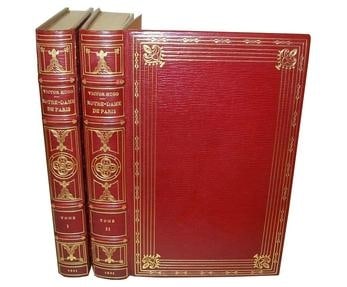
The Hunchback of Notre-Dame (French: Notre-Dame de Paris, lit. ’Our Lady of Paris’, originally titled Notre-Dame de Paris. 1482) is a French Gothic novel by Victor Hugo, published in 1831.
The novel has been described as a key text in French literature and has been adapted for film over a dozen times, in addition to numerous television and stage adaptations, such as a 1923 silent film with Lon Chaney, a 1939 sound film with Charles Laughton, and a 1996 Disney animated film with Tom Hulce.
The novel sought to preserve values of French culture in a time period of great change, which resulted in the destruction of many French Gothic structures and threatened to trivialise the vibrancy of 15th-century France. The novel made Notre-Dame de Paris a national icon and served as a catalyst for renewed interest in the restoration of Gothic form.
Read More About The Hunchback of Notre-Dame / Source
The House at Pooh Corner
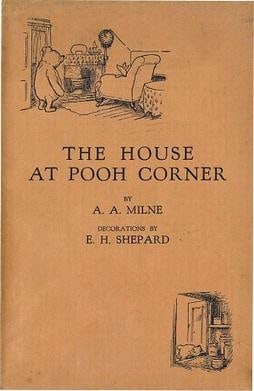
The House at Pooh Corner (1928) is the second volume of stories about Winnie-the-Pooh, written by A. A. Milne and illustrated by E. H. Shepard. It is notable for the introduction of the character Tigger.
Read More About The House at Pooh Corner / Source
The Gruffalo
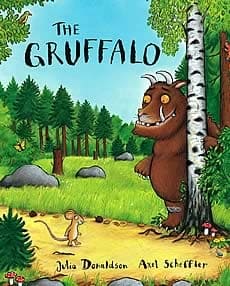
The Gruffalo is a British children’s picture book by writer and playwright Julia Donaldson, illustrated by Axel Scheffler, that tells the story of a mouse, the protagonist of the book, taking a walk in the woods. The book has sold over 13 million copies, has won several prizes for children’s literature, and has been developed into plays on both the West End and Broadway and even an Oscar nominated animated film.
The Gruffalo was initially published in 1999 in the United Kingdom by Macmillan Children’s Books (ISBN 0-333-71093-2) as a 32-page hardback edition, was followed six months later by a paperback edition, and subsequently by a small-format board book edition. It was penned for readers aged three to seven, and is about 700 words long. It is written in rhyming couplets, featuring repetitive verse with minor variance.
Read More About The Gruffalo / Source
The Giving Tree

The Giving Tree is an American children’s picture book written and illustrated by Shel Silverstein. First published in 1964 by Harper & Row, it has become one of Silverstein’s best-known titles, and has been translated into numerous languages.
This book has been described as “one of the most divisive books in children’s literature”; the controversy stems from whether the relationship between the main characters (a boy and the eponymous tree) should be interpreted as positive (i.e., the tree gives the boy selfless love) or negative (i.e., the boy and the tree have an abusive relationship).
Read More About The Giving Tree / Source
The Giver
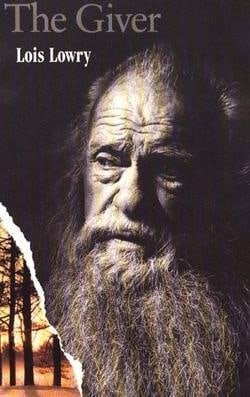
The Giver is a 1993 American young adult dystopian novel written by Lois Lowry. It is set in a society which at first appears to be utopian but is revealed to be dystopian as the story progresses. The novel follows a 12-year-old boy named Jonas. The society has taken away pain and strife by converting to “Sameness”, a plan that has also eradicated emotional depth from their lives. Jonas is selected to inherit the position of Receiver of Memory, the person who stores all the past memories of the time before Sameness, as there may be times where one must draw upon the wisdom gained from history to aid the community’s decision making. Jonas struggles with concepts of all the new emotions and things introduced to him: whether they are inherently good, evil, or in between, and whether it is even possible to have one without the other. The Community lacks any color, memory, climate, or terrain, all in an effort to preserve structure, order, and a true sense of equality beyond personal individuality.The Giver won the 1994 Newbery Medal and has sold more than 12 million copies worldwide as of 2018. In Australia, Canada, and the United States, it is on many middle school reading lists, but it is also frequently challenged and it ranked number 11 on the American Library Association list of the most challenged books of the 1990s. A 2012 survey based in the U.S. designated it the fourth-best children’s novel of all time.In 2014, a film adaptation was released, starring Jeff Bridges, Meryl Streep and Brenton Thwaites. The novel forms a loose quartet with three other books set in the same future era, known as The Giver Quartet: Gathering Blue (2000), Messenger (2004), and Son (2012).
Read More About The Giver / Source
The Enchanted Wood
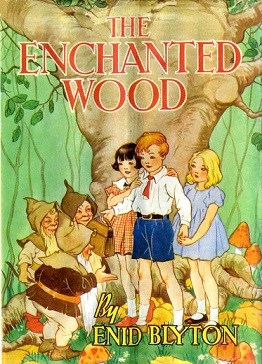
The Enchanted Wood is a children’s novel written by Enid Blyton. It the first in The Faraway Tree series.
Read More About The Enchanted Wood / Source
The Adventures of Pinocchio
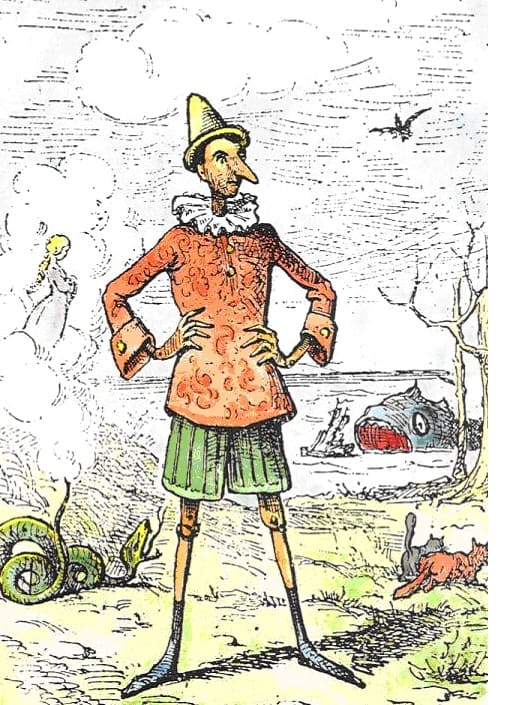
The Adventures of Pinocchio ( pi-NOH-kee-oh; Italian: Le avventure di Pinocchio [le avːenˈtuːre d̪i piˈnɔkːjo]) (commonly shortened to Pinocchio) is a novel for children by Italian author Carlo Collodi, written in Pescia. It is about the mischievous adventures of an animated marionette named Pinocchio and his father, a poor woodcarver named Geppetto.
It was originally published in a serial form as The Story of a Puppet (Italian: La storia di un burattino) in the Giornale per i bambini, one of the earliest Italian weekly magazines for children, starting from 7 July 1881. The story stopped after nearly 4 months and 8 episodes at Chapter 15, but by popular demand from readers, the episodes were resumed on 16 February 1882. In February 1883, the story was published in a single book. Since then, the spread of Pinocchio on the main markets for children’s books of the time has been continuous and uninterrupted, and it was met with enthusiastic reviews worldwide.A universal icon and a metaphor of the human condition, the book is considered a canonical piece of children’s literature and has had great impact on world culture. Philosopher Benedetto Croce reputed it as one of the greatest works of Italian literature. Since its first publication, it has inspired hundreds of new editions, stage plays, merchandising, television series and movies, such as Walt Disney’s iconic animated version, and commonplace ideas such as a liar’s long nose.
According to an extensive research done by the Fondazione Nazionale Carlo Collodi and based on UNESCO sources in the late 1990s, the book has been translated between 240 and 260 languages worldwide. That makes it one of the most translated books in the world. It is considered one of the best-selling books ever published, althought the total sales since its first publication are unknown because of the many public domain re-releases begun in 1940; according to Viero Peroncini: “some sources report 35 million [copies sold], others 80, but it is only a way … to quantifying an unquantifiable success”. According to Francelia Butler, it also remains “the most translated Italian book and, after the Bible, the most widely read”.
Read More About The Adventures of Pinocchio / Source
Swami and Friends

Swami and Friends is the first of a series of novels written by R. K. Narayan (1906–2001), English language novelist from India. The novel, the first book Narayan wrote, is set in British India in a fictional town called Malgudi. The second and third books in the trilogy are The Bachelor of Arts and The English Teacher.
Malgudi Schooldays is a slightly abridged version of Swami and Friends, and includes two additional stories featuring Swami from Malgudi Days and Under the Banyan Tree.
Read More About Swami and Friends / Source
Swallows and Amazons
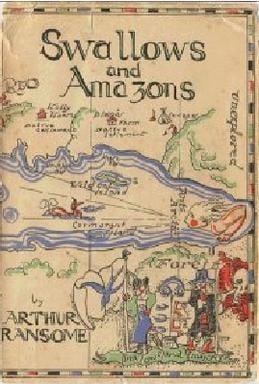
Swallows and Amazons is a children’s adventure novel by English author Arthur Ransome and first published on 21 July 1930 by Jonathan Cape. Set in the summer of 1929 in the Lake District, the book introduces the main characters of John, Susan, Titty and Roger Walker (Swallows); as well as their mother, Mary; and their baby sister, Bridget (nicknamed Vicky). We also meet Nancy and Peggy Blackett (Amazons); their uncle Jim (James Turner), commonly referred to as Captain Flint; and their widowed mother, Molly Blackett. It is the first book in the Swallows and Amazons series, followed by Swallowdale.
At the time, Ransome had been working as a journalist with the Manchester Guardian, but decided to become a full-time author rather than go abroad as a foreign correspondent. He did continue to write part-time for the press, however.
The book was inspired by a summer spent by Ransome teaching the children of his friends, the Altounyans, to sail. Three of the Altounyan children’s names are adopted directly for the Walker family. Ransome and Ernest Altounyan bought two small dinghies called Swallow and Mavis. Ransome kept Swallow until he sold it a number of years later, while Mavis remained in the Altounyan family and is now on permanent display in the Ruskin Museum. However, later in life Ransome tried to downplay the Altounyan connections, changing the initial dedication of Swallows and Amazons and writing a new foreword which gave other sources. In 2003, the novel was listed at number 57 on the BBC’s survey The Big Read.
Read More About Swallows and Amazons / Source
The Story of Ferdinand
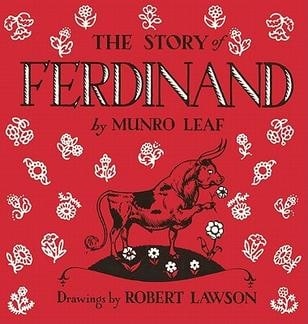
The Story of Ferdinand (1936) is the best known work written by American author Munro Leaf. Illustrated by Robert Lawson, the children’s book tells the story of a bull who would rather smell flowers than fight in bullfights. He sits in the middle of the bull ring failing to take heed of any of the provocations of the matador and others to fight. Ferdinand did not possess the more violent tendencies that bulls his age had. The Story of Ferdinand was published in 1936 by Viking Hardcover. After the book was published, it was labeled as having an alternate political agenda following the Spanish Civil War. During World War II, the British Air Transport Auxiliary started flying into Europe after D-Day and their pilots, who were non-combatants, used Ferdinand the Bull as their call sign.
Read More About The Story of Ferdinand / Source
Robinson Crusoe
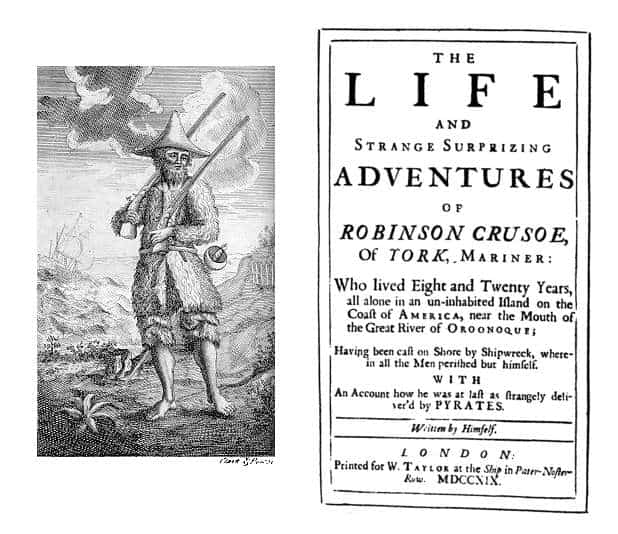
Robinson Crusoe () is a novel by Daniel Defoe, first published on 25 April 1719. The first edition credited the work’s protagonist Robinson Crusoe as its author, leading many readers to believe he was a real person and the book a travelogue of true incidents.Epistolary, confessional, and didactic in form, the book is presented as an autobiography of the title character (whose birth name is Robinson Kreutznaer) – a castaway who spends 28 years on a remote tropical desert island near the coasts of Venezuela and Trinidad (roughly resembling Tobago), encountering cannibals, captives, and mutineers, before ultimately being rescued. The story has been thought to be based on the life of Alexander Selkirk, a Scottish castaway who lived for four years on a Pacific island called “Más a Tierra” (now part of Chile) which was renamed Robinson Crusoe Island in 1966.: 23–24 Despite its simple narrative style, Robinson Crusoe was well received in the literary world and is often credited as marking the beginning of realistic fiction as a literary genre. It is generally seen as a contender for the first English novel. Before the end of 1719, the book had already run through four editions, and it has gone on to become one of the most widely published books in history, spawning so many imitations, not only in literature but also in film, television, and radio, that its name is used to define a genre, the Robinsonade.
Read More About Robinson Crusoe / Source
Rabbit at Rest

Rabbit at Rest is a 1990 novel by John Updike. It is the fourth and final novel in a tetralogy, succeeding Rabbit, Run; Rabbit Redux; and Rabbit Is Rich. A related novella, Rabbit Remembered, was published in 2001. Rabbit at Rest won the Pulitzer Prize for Fiction in 1991, the second “Rabbit” novel to garner that award.
Read More About Rabbit at Rest / Source
Pippi Longstocking

Pippi Longstocking (Swedish: Pippi Långstrump) is the fictional main character in an eponymous series of children’s books by Swedish author Astrid Lindgren. Pippi was named by Lindgren’s daughter Karin, who asked her mother for a get-well story when she was off school.
Pippi is red-haired, freckled, unconventional and superhumanly strong – able to lift her horse one-handed. She is playful and unpredictable. She often makes fun of unreasonable adults, especially if they are pompous and condescending. Her anger comes out in extreme cases, such as when a man mistreats his horse. Pippi, like Peter Pan, does not want to grow up. She is the daughter of a buccaneer captain and has adventure stories to tell about that, too. Her four best friends are her horse and monkey, and the neighbours’ children, Tommy and Annika.
After being rejected by Bonnier Publishers in 1944, Lindgren’s first manuscript was accepted by Rabén and Sjögren. The three Pippi chapter books (Pippi Longstocking, Pippi Goes on Board, and Pippi in the South Seas) were published from 1945 to 1948, followed by three short stories and a number of picture book adaptations. They have been translated into 76 languages as of 2018 and made into several films and television series.
Read More About Pippi Longstocking / Source
The Pilgrim's Progress
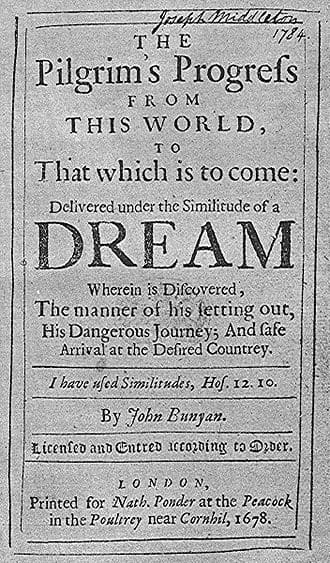
The Pilgrim’s Progress from This World, to That Which Is to Come is a 1678 Christian allegory written by John Bunyan. It is regarded as one of the most significant works of religious, theological fiction in English literature. It has been translated into more than 200 languages, and has never been out of print. It appeared in Dutch in 1681, in German in 1703 and in Swedish in 1727. The first North American edition was issued in 1681. It has also been cited as the first novel written in English. According to literary editor Robert McCrum, “there’s no book in English, apart from the Bible, to equal Bunyan’s masterpiece for the range of its readership, or its influence on writers as diverse as William Thackeray, Charlotte Bronte, Mark Twain, CS Lewis, John Steinbeck and even Enid Blyton.”Bunyan began his work while in the Bedfordshire county prison for violations of the Conventicle Act of 1664, which prohibited the holding of religious services outside the auspices of the established Church of England. Early Bunyan scholars such as John Brown believed The Pilgrim’s Progress was begun in Bunyan’s second, shorter imprisonment for six months in 1675, but more recent scholars such as Roger Sharrock believe that it was begun during Bunyan’s initial, more lengthy imprisonment from 1660 to 1672 right after he had written his spiritual autobiography Grace Abounding to the Chief of Sinners.The English text comprises 108,260 words and is divided into two parts, each reading as a continuous narrative with no chapter divisions. The first part was completed in 1677 and entered into the Stationers’ Register on 22 December 1677. It was licensed and entered in the “Term Catalogue” on 18 February 1678, which is looked upon as the date of first publication. After the first edition of the first part in 1678, an expanded edition, with additions written after Bunyan was freed, appeared in 1679. The Second Part appeared in 1684. There were eleven editions of the first part in John Bunyan’s lifetime, published in successive years from 1678 to 1685 and in 1688, and there were two editions of the second part, published in 1684 and 1686.
Read More About The Pilgrim's Progress / Source
Peter Pan
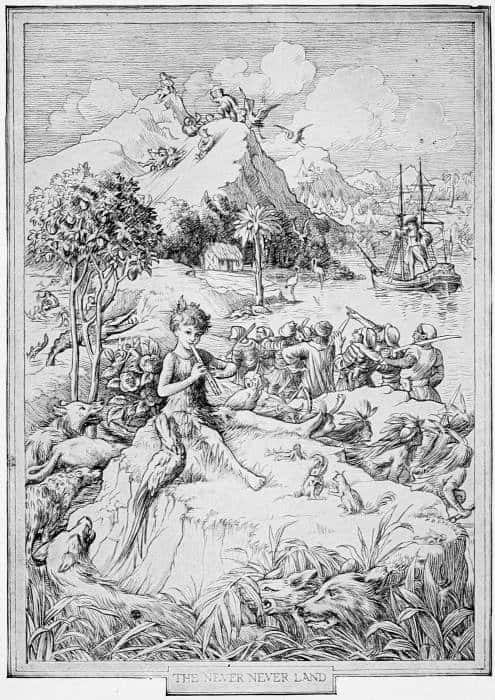
Peter Pan is a fictional character created by Scottish novelist and playwright J. M. Barrie. A free-spirited and mischievous young boy who can fly and never grows up, Peter Pan spends his never-ending childhood having adventures on the mythical island of Neverland as the leader of the Lost Boys, interacting with fairies, pirates, mermaids, Native Americans, and occasionally ordinary children from the world outside Neverland.
Peter Pan has become a cultural icon symbolizing youthful innocence and escapism. In addition to two distinct works by Barrie, The Little White Bird (1902, with chapters 13–18 published in Peter Pan in Kensington Gardens in 1906), and the West End stage play Peter Pan; or, the Boy Who Wouldn’t Grow Up (1904, which expanded into the 1911 novel Peter and Wendy), the character has been featured in a variety of media and merchandise, both adapting and expanding on Barrie’s works. These include the 1924 silent film, 1953 Disney animated film, a 2003 dramatic/live-action film, a television series and many other works.
Read More About Peter Pan / Source
Percy Jackson & the Olympians
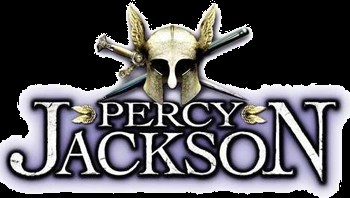
Percy Jackson & the Olympians, often shortened to Percy Jackson, PJO, or PJatO is a pentalogy of fantasy adventure novels written by American author Rick Riordan, and the first book series in the Camp Half-Blood Chronicles. Five supplementary books, along with graphic novel versions of each book in the first series have also been released. More than 69 million copies of the books have been sold in more than 35 countries.As of December 10, 2021, the books have been on The New York Times Best Seller list for children’s book series for 600 weeks. The first book was adapted into a film titled Percy Jackson & the Olympians: The Lightning Thief in 2010, which was commercially successful, but due to major deviations from the books received mixed reviews from fans around the world. An adaptation of the second book, titled Percy Jackson: Sea of Monsters, was released in 2013. The Walt Disney Company holds the film rights to the franchise as part of its acquisition of 20th Century Studios.
A TV series adaptation is in development for Disney+, with the release date being unannounced as of November 2021.
Read More About Percy Jackson & the Olympians / Source
Northern Lights

Northern Lights (titled The Golden Compass in North America and some other countries) is a young-adult fantasy novel by Philip Pullman, published in 1995 by Scholastic UK. Set in a parallel universe, it follows the journey of Lyra Belacqua to the Arctic in search of her missing friend, Roger Parslow, and her imprisoned uncle, Lord Asriel, who has been conducting experiments with a mysterious substance known as “Dust”.
Northern Lights is the first book of the trilogy, His Dark Materials (1995 to 2000). Alfred A. Knopf published the first US edition April 1996, under the name The Golden Compass, under which title it was adapted as a 2007 feature film and as a companion video game. The book has also been adapted as a TV series in 2019 under the name His Dark Materials.
Pullman won the 1995 Carnegie Medal from the Library Association, recognising the year’s outstanding British children’s book. For the 70th anniversary of the Medal, it was named one of the top ten winning works by a panel, composing the ballot for a public election of the all-time favourite. Northern Lights won the public vote from that shortlist and was thus named the all-time “Carnegie of Carnegies” on 21 June 2007.
Read More About Northern Lights / Source
My Name is Aram

My Name is Aram is a book of short stories by William Saroyan first published in 1940. The stories detail the exploits of Aram Garoghlanian, a boy of Armenian descent growing up in Fresno, California, and the various members of his large family. This book is assigned reading in some schools.
Read More About My Name is Aram / Source
The Blue Lotus

The Blue Lotus (French: Le Lotus bleu) is the fifth volume of The Adventures of Tintin, the comics series by Belgian cartoonist Hergé. Commissioned by the conservative Belgian newspaper Le Vingtième Siècle for its children’s supplement Le Petit Vingtième, it was serialised weekly from August 1934 to October 1935 before being published in a collected volume by Casterman in 1936. Continuing where the plot of the previous story, Cigars of the Pharaoh, left off, the story tells of young Belgian reporter Tintin and his dog Snowy, who are invited to China in the midst of the 1931 Japanese invasion, where he reveals the machinations of Japanese spies and uncovers a drug-smuggling ring.
In creating The Blue Lotus, Hergé exhibited a newfound emphasis on accuracy and documentation in his portrayal of foreign societies. He was heavily influenced by his close friend Zhang Chongren, a Chinese student studying in Belgium, and the work both satirises common European misconceptions about China as well as criticising the actions of the Japanese invaders. The Blue Lotus was a commercial success in Belgium and was soon serialised in France and Switzerland, while news of the book led to the Chinese political leader Chiang Kai-shek inviting Hergé to visit China itself. Hergé continued The Adventures of Tintin with The Broken Ear, while the series itself became a defining part of the Franco-Belgian comics tradition. In 1946, The Blue Lotus was partially re-drawn and coloured by the cartoonist and his team of assistants; during this process a number of minor plot elements were changed. The adventure introduces the recurring characters J.M. Dawson and Chang Chong-Chen. The story was adapted for a 1991 episode of the Ellipse/Nelvana animated series The Adventures of Tintin. Critical analysis of the story has been positive, with various commentators considering it to be one of Hergé’s finest works.
Read More About The Blue Lotus / Source
The Little Engine That Could
The Little Engine That Could is an American folktale (existing in the form of several illustrated children’s books and films) that became widely known in the United States after publication in 1930 by Platt & Munk. The story is used to teach children the value of optimism and hard work. Based on a 2007 online poll, the National Education Association listed the book as one of its “Teachers’ Top 100 Books for Children”.
Read More About The Little Engine That Could / Source
The Labours of Hercules
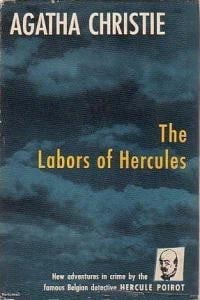
The Labours of Hercules is a short story collection written by Agatha Christie and first published in the US by Dodd, Mead and Company in 1947 and in the UK by Collins Crime Club in September of the same year. The US edition retailed at $2.50 and the UK edition at eight shillings and sixpence (8/6, 42½p).It features the Belgian detective Hercule Poirot and gives an account of twelve cases with which he intends to close his career as a private detective. His regular associates (his secretary, Miss Felicity Lemon, and valet, George/Georges) make cameo appearances, as does Chief Inspector Japp. The stories were all first published in periodicals between 1939 and 1947.
In the foreword, Poirot declares that he will carefully choose the cases to conform to the mythological sequence of the Twelve Labours of Hercules. In some cases (such as “The Nemean Lion”), the connection is a highly tenuous one, while in others the choice of case is more or less forced upon Poirot by circumstances. By the end, “The Capture of Cerberus” has events that correspond with the twelfth labour with almost self-satirical convenience.
Read More About The Labours of Hercules / Source




